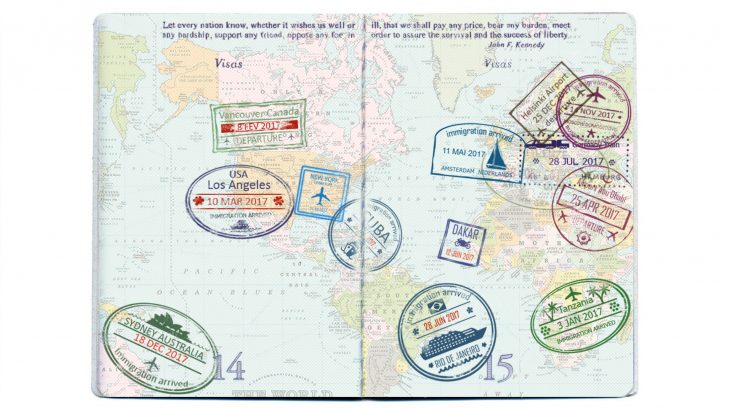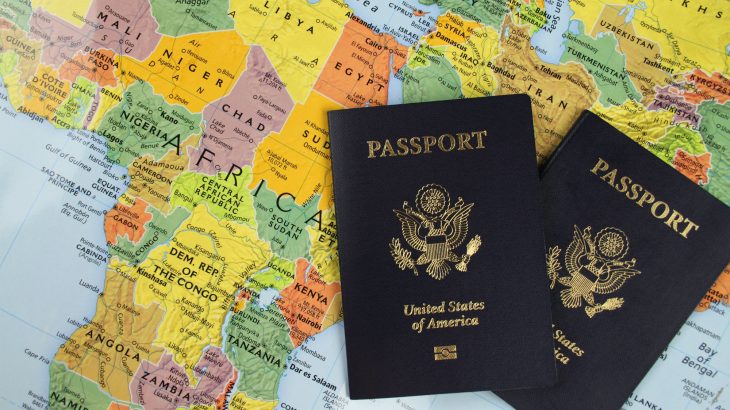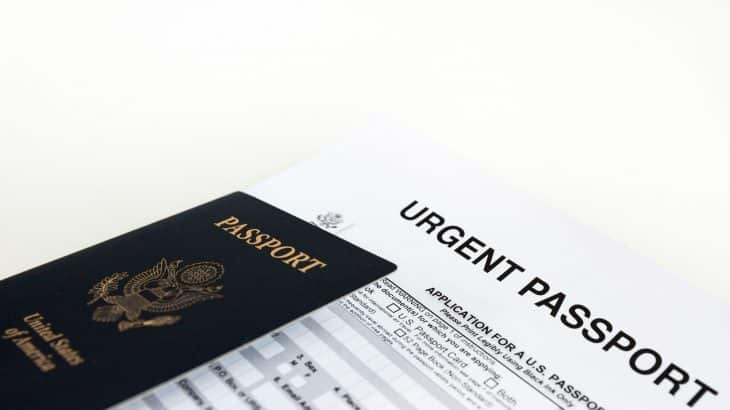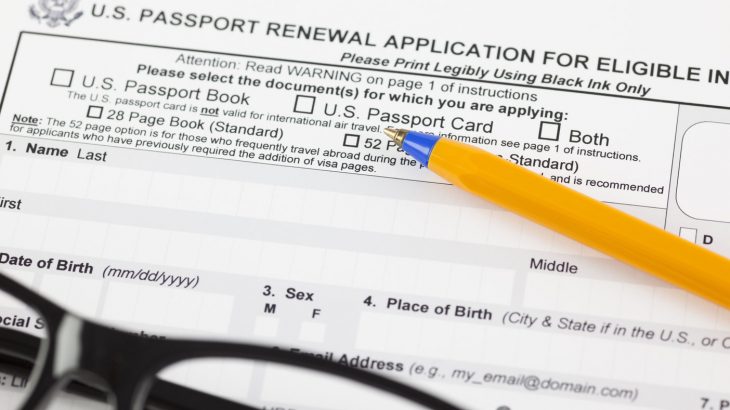An official travel and identification document that is needed to enter and return to the United States from most countries, a United States passport is an essential must-have for all U.S. travelers. Even if you don’t have any international travel planned in the immediate future, it’s worth going through the process of obtaining a United States passport. For this, it is better to go through the official United States government channels to receive your passport rather than using a commercial passport application agency. To have a United States passport, you need to be a U.S. citizen by birth or naturalization or be a qualifying U.S. national.
Traveling With a U.S. Passport
If you’re an American who wants to travel abroad, you’ll need to apply for a passport. The United States passport is a small navy blue booklet that is valid for 10 years and contains vital information like your name, date of birth, photo, residency status in the United States and blank pages for stamps. When entering other countries, you hand over your passport to immigration, who stamps one of your pages with their country’s official seal.
How to Get a Passport
While it might seem like an overwhelming process, applying for a United States Passport is much easier than you think. As long as you have the necessary forms of identification, like a U.S. birth certificate, a record of your birth abroad, naturalization certificate or certificate of citizenship. You’ll also need to prove your identity with a standard government-issued ID, like a driving license.
To get a new passport, you must go to a local passport acceptance facility. This can be a post office, library or county court. Some of these facilities require appointments and many will even take your passport photo for a fee.
You’ll have to go in person to present your application if the following applies to you:
- It’s your first passport.
- Your last passport was damaged or lost.
- Your last passport was issued more than 15 years ago.
- Your name has changed and you have no supporting legal documents.
- It’s for a child under the age of 16.
So, what do you need to bring with you to get a passport? Use this as your official checklist:
- Passport application forms
- Proof of U.S. citizenship
- Government-issued photo ID (like a driver’s license or military ID)
- Current passport photo
- Applicable fee payment method
Step 1:
Follow the application wizard online to find out what passport forms apply to you. Download the relevant U.S. government forms online and print them yourself or pick up a paper copy from a U.S. post office. Read the instructions carefully on how to fill out the form and the printing requirements. Passport applications cannot be submitted online. Do not sign the form until you are instructed to do so in front of a passport designated official when applying in person.
Step 2:
Next, gather your documents required for applying, including:
- A certified U.S. birth certificate issued by the city, county or state (not a copy). You can call the government of the state in which you were born to get an official version with a notary’s seal. Know that the birth certificate must list the full name(s) of your parent(s). If you don’t have a birth certificate, you can still get a passport.
- Records of birth abroad if you weren’t born in the United States
- Naturalization certificate
- Certificate of citizenship
You’ll need to be prepared to prove your identity with any one of these:
- Previous U.S. passport (altered or damaged passports are not accepted)
- Naturalization certificate
- Certificate of citizenship
- Current, valid:
- Driver’s license
- Government ID: city, state, or federal
- Military ID: military and dependents
Step 3:
Get your passport photos taken. Follow the official photo guidelines for requirements on your pose, expression and attire as well as photo resolution, print size and quality. Take note of the suggested examples and frequently asked questions section. This step is important, as it’s the biggest reason applications get held up during the application process.
Step 4:
Prepare your application fees. Check the fee calculator and applicable chart online, as passport prices change periodically. As of 2019, passport fees for first-time passport applications are $110 plus $35 for adults (ages 16 and older), while renewals are $110. Fees for children under the age of 16 are $80 plus $35. For an extra $60, you can expedite your passport. Don’t forget to check what payment methods are allowed at your passport acceptance facility, as checks and money orders are often the only forms of payment accepted.
Step 5:
Get your passport! Hand over your completed forms, photos and fees to your nearest passport acceptance facility and wait. Processing times vary throughout the year, but typically you can expect it to arrive by mail in 4-6 weeks (2-3 weeks for expedited service). After about a week, you can check your application’s status online.
Still confused on the passport application process? Watch these helpful videos to get you started.
Travel Tip: Make a copy of your passport and leave one at home, then email a copy to yourself along with other important travel documents. If you lose your passport while traveling overseas, having a copy will make getting a temporary or replacement passport much easier.
U.S. Passport Photo Requirements
It’s important to check the current passport photo requirements that need to be met in order to obtain a passport. You must provide one photo with your passport application. The policies apply to both adults and children under the age of 16, and there are a few exceptions to the photo policies for infants.
Photo Basics
- Submit one color photo, taken in the last 6 months.
- Use a clear image of your face. Do not use filters.
- Have someone else take your photo. No selfies.
- Take off your eyeglasses.
- Use a plain white or off-white background.
Resolution, Print Size & Quality
- Submit a high-resolution photo that is not blurry, grainy or pixelated.
- The correct size of a passport photo is:
-
- 2 x 2 inches (51 x 51 mm)
- Head must be between 1 -1 3/8 inches (25 – 35 mm) from the bottom of the chin to the top of the head.
-
- Print on matte or glossy photo-quality paper.
- Do not digitally change the photo.
- You cannot submit a damaged photo with holes, creases or smudges.
Pose and Expression
- Have a neutral facial expression with both eyes open.
- Face the camera directly with full face in view.
Attire
- You cannot wear glasses.
- Wear your normal clothing. You cannot wear a uniform or clothing that looks like a uniform.
You cannot wear a hat or head covering. (There are exceptions for religious purposes)
You can wear jewelry and keep on your facial piercings as long as they do not hide your face.
How to Get Your U.S. Passport Expedited
If you need your passport in a hurry, you have options. There are a lot of scammy online services that offer to do this for you, but paying third-party services will not result in getting your passport any faster.
You can ask and pay for expedited service if:
- You are traveling in the next 24-48 hours for an emergency such as a serious illness, injury or death in your immediate family.
- You are traveling within 2 weeks and are able to provide proof of immediate international travel (for example, purchased airline or cruise tickets).
For the above, you need to follow the steps for the expedited service request. There are two options to make an appointment:
- For an automated appointment system available 24 hours a day, call 1-877-487-2778; TDD/TTY: 1-888-874-7793.
- Use the Passport Services online appointment system.
Not an emergency?
If you need your U.S. passport more quickly than the normal processing period of 4 to 6 weeks, you can request expedited service by mail or in person at a passport acceptance facility near you. In addition to the regular passport application costs, the expedited service will cost an extra $60, plus any delivery costs.
When to Renew Your U.S. Passport
The process for renewing your passport is similar to first-time passport applicants but instead, you will apply using the DS-82 Form. However, many countries require that your passport be valid for a six month period in order to be eligible to enter, and airlines will often deny a passenger on board if their passport expires in less than six months. Before you travel internationally, make sure your passport has plenty of valid months left on it. Typically, you’ll want to renew your passport nine months before it expires.
Want to apply by mail? Your passport must meet all these requirements:
- Must be submitted with your application
- Must be undamaged (other than normal “wear and tear”)
- Must be issued when you were age 16 or older
- Must be issued within the last 15 years
- Must be issued in your current name (or you can document your name change with an original or certified copy of your marriage certificate, divorce decree or court order)
If you meet all the requirements, you can submit an application by mail. If any of the above statements do not apply to you, you must Apply in Person using form DS-11.
If you live outside the U.S. or Canada: Contact the U.S. Embassy or consulate near you for information and forms on all passports requested from overseas.
Application Tip: Travel frequently? Make sure to tick the “52 page” box to receive a larger passport book with 52 pages, at no additional cost.
How to Get a Passport Replaced
Has your passport been lost or stolen? Don’t panic. The first thing to do is report the incident to the U.S. State Department to protect yourself from identity theft. You can do this online, by phone (1-877-487-2778) or by mail.
Planning to leave the United States within two weeks? Make an appointment to apply in person at a passport agency or center to replace your passport. Bring your airline ticket, passport fee and expedite fee. From here, it can take up to two weeks to get the replacement passport.
Not planning to travel outside the United States in the next two weeks? Make an appointment at an authorized passport acceptance facility to replace your passport.
Are you outside of the United States? If your passport is lost or stolen outside of the United States, go to the nearest U.S. embassy or consulate to have it replaced.
The State Department can issue what it calls a limited-validity, emergency passport that allows you to return to the United States or continue on your trip. Upon returning to the United States, an emergency passport can be turned in and exchanged for a 10-year passport.










